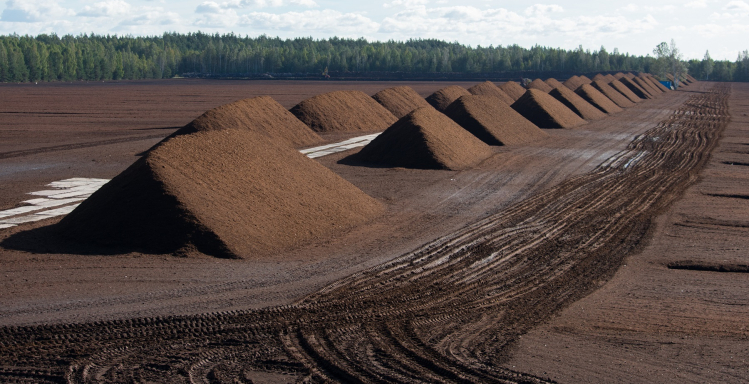The importance of moving away from peat-based products

This month is Peat Free April, a campaign that encourages people to move away from using peat-based products. With peatlands being home to unique flora and fauna, England’s peatlands have often been described as the country’s ‘national rainforests’. While peatlands make for stunning landscapes, they also store carbon, and play a vital role in maintaining the health of our planet. Yet, peatlands in the UK and around the world are increasingly under threat. As such, governments, organisations, and communities around the world, continue to draw attention to the urgent need for the protection, restoration, and sustainable management of peatlands, and moving away from peat-free products.
Peatland covers just 3% of the plant, yet, according to UNEP, they store twice as much carbon as all the forests in the world. Not only that, peatlands also have the ability to store more of the carbon we will emit in the years to come. Peatlands have a net cooling effect on the climate, help reduce flood risks, and also support biodiversity. They provide floodplain storage in lowlands, while slowing the flow of water from uplands. They are also vital ground for various habitats including birds, rare and unique species such as insects and plants. At the same time, they also carry significant cultural meaning to different communities around the world.
Therefore, the continued harvesting of peat will cause serious harm on the environment, as it releases the carbon it stores into the atmosphere and accelerates climate change. The UNEP’s Global Peatland Assessment estimates that around 50 million hectares of peatlands have been historically drained around the world. According to the 2021 England Peat Action Plan, amidst the loss of peatlands, only 13% of peatlands in England are in their near natural state. Peatlands are destroyed worldover due to various activities such as drainage for agriculture which makes peatlands less wet, atmospheric pollution, peat extraction for horticulture, fuel, and various development activities, and overgrazing and erosion, among others.
Peat is used for various household and other purposes. For example, peat has been widely used in horticulture as garden compost and to improve the quality of garden soil. Its popularity is also given its accessibility and that it is available cheaply. However, against increased threats to peatlands and its impact on the future of the planet, back in 2011, the UK government set out plans for England’s horticultural sector to be completely peat-free by 2030. There has been some progress in moving away from the use of peat, especially by some manufactures, retailers, and growers. The UK’s soft fruit industry, for instance, have also successfully moved away from using peat to using coir products.
However, more needs to be done in sharing knowledge about the harmful effects of peat harvesting, and promoting environmentally-friendly alternatives for peat. As a company that manufactures and supplies sustainable horticultural products, at CoirProducts.co.uk (Salike Limited), we continue to raise awareness about the benefits of using coir as an alternative to peat-based products. Made out of fibres extracted from the husk of the coconut, coir is a completely natural, biodegradable, organic, and peat-free resource. There is minimal harm on the environment in producing or using coir products for gardening and growing. And as we are a carbon neutral company, we also offset our carbon in transporting goods to the UK, making coir an ideal choice for the eco-conscious grower.
